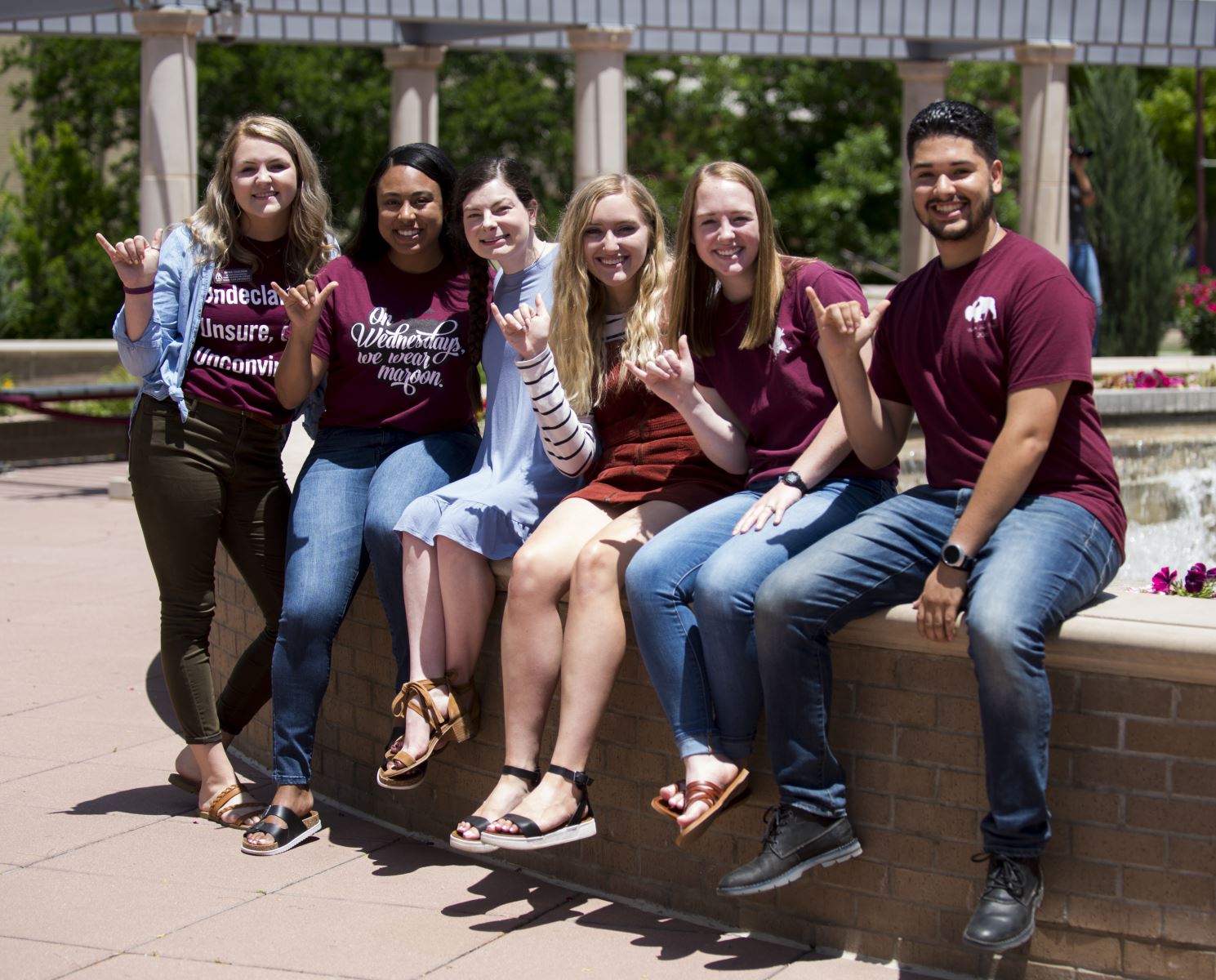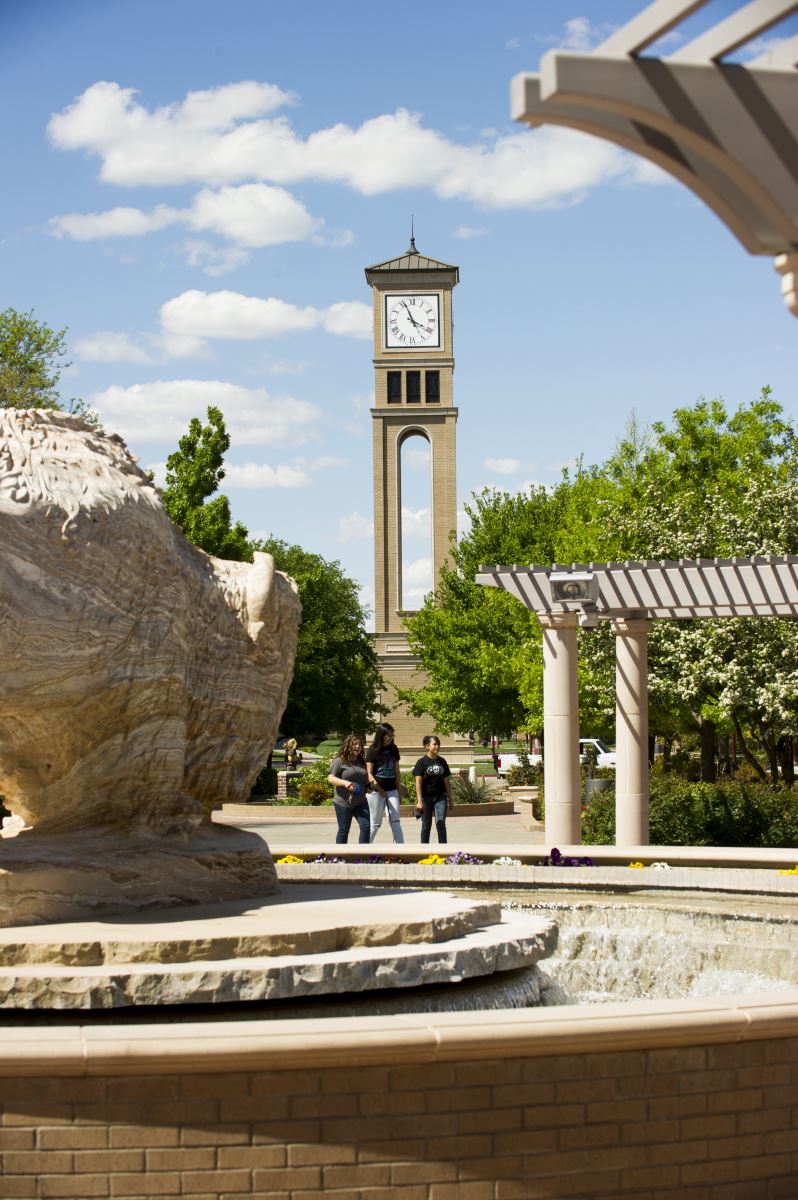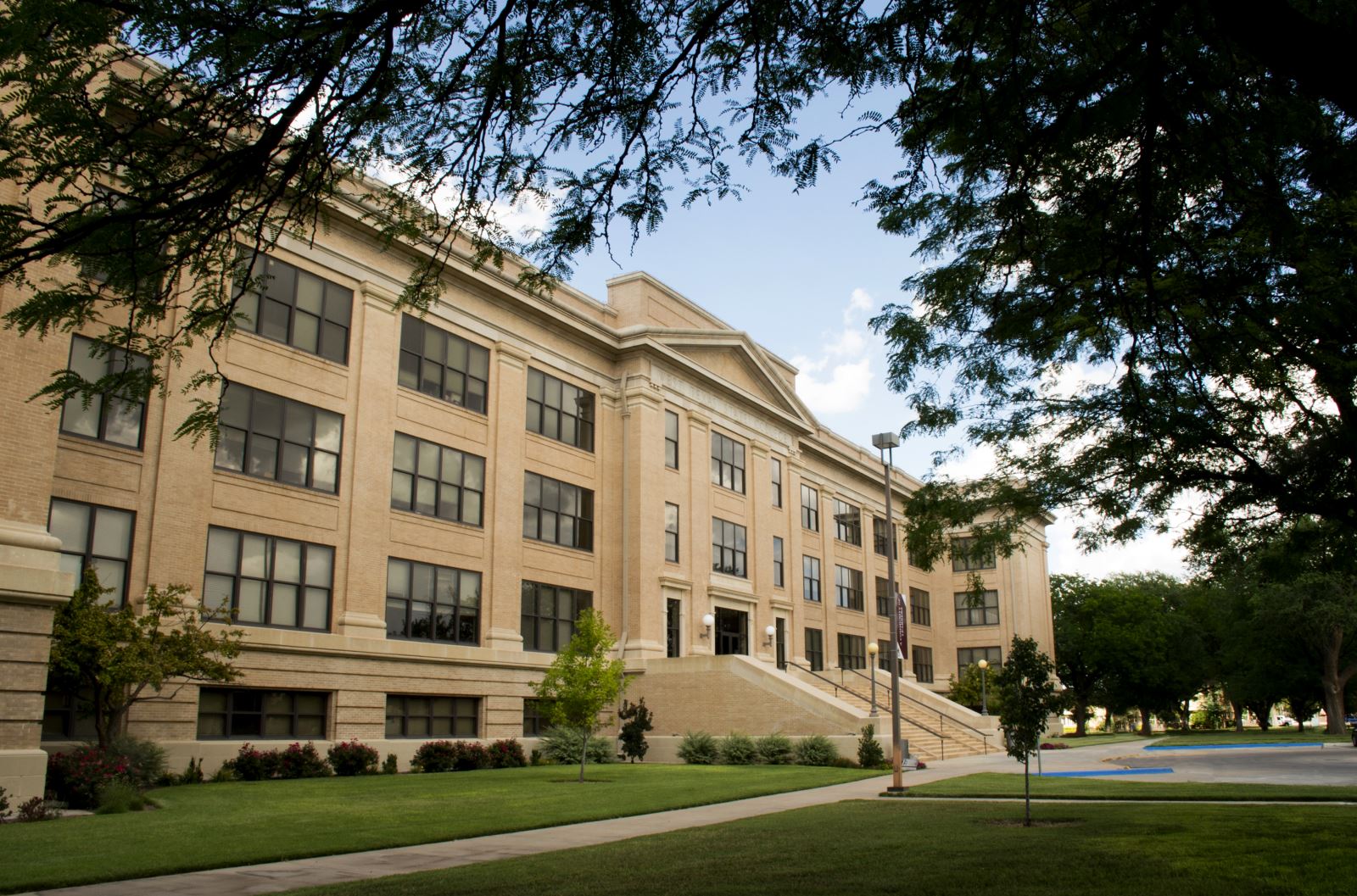- Jon Mark Beilue
- Community
- Business
Figures, Not Feelings
Economic study validates WT's impact in area
West Texas A&M University officials wanted figures, not feelings. WT president, Dr. Walter Wendler, and others knew the University made a significant economic impact to the Texas Panhandle — more than given credit, they believed — but what was the impact exactly?
"I wanted to better understand the positive value in a way that can be measured from West Texas A&M to the Texas Panhandle," Wendler said. "I’ll just say it — people look past us or over us sometimes, and we can be undervalued in what we provide economically to the Texas Panhandle. It doesn’t sit well with me and others because I believe we do much more than a lot of people think we do."
To that end, WT hired Economic Modeling Specialists, Inc. (Emsi), out of Coeur d’Alene, Idaho, where one of its specialties is economic studies of universities on their city and immediate area, to see how much the university moved the economic needle.
The 109-page economic impact analysis showed the needle moved all right. The big number: $747.3 million.
That’s the total added economic value the study showed WT to have in the 2017-2018 fiscal year. That’s a multiplier number that is 3 percent of the total gross regional product of the Panhandle.
The analysis reported that is the equivalent of supporting 12,225 jobs, that 1 of 23 jobs in the Panhandle is supported by activities of WT students.
"It’s a significant number," said Dyke Rogers of Dalhart, a 1970 graduate, past president of the WT Foundation and current member of the Buffalo Council. "Sometimes it’s hard to get your arms around these numbers as to what they mean and their comparison, but there’s not many things in the Panhandle larger than that."
The $747.3 million is higher, the study said, than Amarillo/Canyon’s entire real estate and rental and leasing industry.
"When I saw the bottom line of $747 million and more than 12,000 jobs supported, I said to myself, 'Wow, that’s larger than I anticipated,’" Wendler said. "Based on some other studies I saw of other universities, I thought it might be around $500 million.
"It’s not just in Canyon, of course. We have more faculty and staff who live in Amarillo than Canyon. The number of jobs supported (1 in 23) jumps out at me. We have a lot of impact on the workforce, and those are the kind of things that surprised me."
Other facts and figures include:
- A $71.4 million payroll for 910 full-time and part-time employees.
- $95.2 million spent on goods and services for daily activities.
- $100.9 million operations spending in added income.
- 12,123 students in classroom and distance learning and 219 non-credit students served. Percentage breakdown: 58 percent women, 42 percent male.
The study also took a look at the Harrington Academic Hall WTAMU Amarillo Center, which opened at 8th Avenue and Tyler Street in Amarillo in the spring of 2019. Six degree programs are offered there. Also housed are the Speech and Hearing Clinic, the Center for Learning Disabilities, the Small Business Development Center and the Panhandle Area Health Education Center.
Though some numbers from Harrington Hall could be viewed with a skeptical eye, some hard numbers include a present added economic value of $42.1 million with 879 students projected in 2019-2020.
That number will rise most likely in 2021 when the WT School of Nursing is expected to move to downtown Amarillo and occupy the second floor, Wendler said. A minimum of 250 students and a faculty of 20 to 25, including Dr. Dirk Nelson, dean of the College of Nursing and Health Sciences, will be added.
That means easier access to medical facilities in Amarillo, having more health-related programs in one location as well as the economic driver to Amarillo of 275 entering downtown daily that would not otherwise do so.

A sense of taken for granted
Privately, WT officials are disappointed this anticipated move did not elicit financial help from the Amarillo Economic Development Corporation (AEDC). The AEDC provided the Texas Tech College of Veterinary Medicine in 2016 a total of $15 million.
In 2018, the Amarillo city council supported an AEDC pledge of up to $69 million for the school, which received official approval from the state legislature and the Higher Education Coordinating Board this past summer.
"The (Texas A&M) system, under (chancellor) John Sharp’s leadership, has agreed to a very convenient way for us to borrow some funds to finish out the second floor," Wendler said. "We had some other hopes that just didn’t come to fruition."
If WT and its supporters had hopes of picking up some AEDC financial crumbs, they were disappointed.
"We’re taken for granted, so to speak," said Stanley Schaeffer, who received his bachelor’s and master’s from WT in the 1950s and is one of the school’s largest donors. "We’ve got some people who really do not appreciate or recognize WT’s economic impact.
"We’re doing a good job and taken for granted. They’ll say, 'Just keep doing what you’re doing’ and pat us on the head every once in a while. Look, I’m a supporter of the Tech vet school and what it adds to the economic value of the area, but I want to be recognized for what WT is contributing to the area also."
It is no secret to those with a longtime investment in either WT or Amarillo that there has often been a disconnect between the two that goes back to not long after the school was founded in Canyon in 1910.
It’s not so much animosity as it has been a lack of embrace or cooperation. Over the decades, there’s been enough blame on both sides. Why? The short answer is both thought they could have a parallel existence without needing the other.
The current leadership at WT and Amarillo seems to want to change that. Armed with the new economic analysis, one of the first groups that Wendler released the findings to was the Amarillo city council. For what it’s worth, four of the five council members attended Wendler’s Christmas party.
"I live in Canyon, but we worship in downtown Amarillo, and it takes me 16 minutes to get from my home to the church," Wendler said. "It used to take me that long when I drove across town when we lived in College Station.
"The idea that these two cities are somehow far apart, I don’t think it benefits either city well or the Panhandle well, and from a personal perspective, it doesn’t serve WT well. We’re an important regional university and working to become a regional research university and have more impact on job production than we’ve had in the past."
Amarillo Mayor Ginger Nelson believes an important part of the city’s future will depend largely on the success of local universities and their innovation.
WT: Bait on the hook for Amarillo
"I can’t state this any more plainly or clearly and that I believe Amarillo’s future is tied with higher education that are present in the Panhandle, and that’s WT, Tech, Amarillo College, Frank Phillips and Wayland," she said. "They not only prepare the work force that we’re already in need of, but we need their people. 
"If we’re going to grow, we can’t organically have babies born in the hospital as our only growth. We’ve got to continue to find ways to attract people to come to Amarillo. We’ve got to expand our lens for ways to attract people not from here to make a life here. We have a great quality of life. I look at WT as some of the best bait on the hook."
The Emsi economic analysis also showed that 60 percent of WT graduates remain in the Texas Panhandle. College graduates from WT earn about twice what a high school graduate would earn - an increase of about $27,000 a year. Over a lifetime of earning, that’s about a $1.1 million increase per person.
The WT 125: From the Panhandle to the World generational plan unveiled earlier this year emphasizes future research that would be hyper-local to issues that affect the Panhandle, from wind energy to water to agriculture to rural medicine to public education.
"With the kind of research I see developing, we will make a lot more direct impact on the economic future in our area because we’re tailoring our programs to this region," Wendler said. "We’re not trying to serve as an audience for the (D-FW) metroplex. We’re catering our programs to benefit this locale. If we’re successful, we’ll be making even more of a contribution to the Panhandle."
Tech obviously is increasing its footprint in Amarillo with the vet school to go along with the pharmacy school and its health sciences center. Wendler doesn’t see the two universities competing against each other in Amarillo. Nelson said there’s room for both.
"There absolutely is," she said. "The city of Amarillo wants to work with WT on every project and every vision that we feel can help them and the city. They absolutely have our support. I could not be more behind the leadership of Dr. Wendler and his team. I’m a gigantic supporter of their long-range plan and am a huge supporter of WT students in our community as future business owners and taxpayers.
"The word 'synergy’ is probably overused, but it’s like a ping-pong match or a pinball machine. Once the ball is rolling and the longer it keeps moving around economically and educationally, the score keeps going up for all of us - for WT, for our businesses and hotels and retail stores. I think WT sees the vision in that. I know Dr. Wendler does."
Enrollment hovers around 10,000, which includes classroom and online students. The on-campus number hits a sweet spot, Wendler says, but he and others would like to increase the distance learning to where it would make up almost 50 percent of all students that would number near 15,000.
"The model for college is going to change," Rogers said. "We’re going to have to be more cost-efficient and be quicker in and quicker out. There’s a lot more non-traditional students and we’ll need to make a real effort to serve many first-generation students."
But he is well aware of how WT has already changed. He remembers a reception he hosted for a Buff football coach near Dalhart a number of years ago. He asked for a list of WT alumni in the Dalhart and Stratford area to invite.
Of a list of 500, he said, about 75 percent of the names were invalid. Many had moved or women had married and their married names weren’t available. Only three alumni showed among a group of 75.
"Up until about 15 years ago, WT’s reputation was a local Canyon school," he said. "I didn’t see any diplomas on anybody’s wall. You didn’t see any WT gear anywhere. I don’t believe people were all that excited about graduating from WT. It seemed like the place to go if you didn’t have any other options."
But, he said, changes that include improving the quality of deans, recruiting and hiring of key faculty, and accreditation in important disciplines, have made a major impact. This economic report is validation to some of those changes.
"What I see now is WT is a first or second choice hopefully for every student in the Panhandle," he said. "The change has been remarkable. Its reputation has steadily improved as has the look of the campus. I see diplomas on the wall, and I see people wearing WT gear around the Panhandle. It’s a total change."
View the Top 10 Numbers of the Economic Impact Report for 2019.
Do you know of a student, faculty member, project, an alumnus or any other story idea for "WT: The Heart and Soul of the Texas Panhandle?" If so, email Jon Mark Beilue at jbeilue@wtamu.edu.
—WTAMU—

